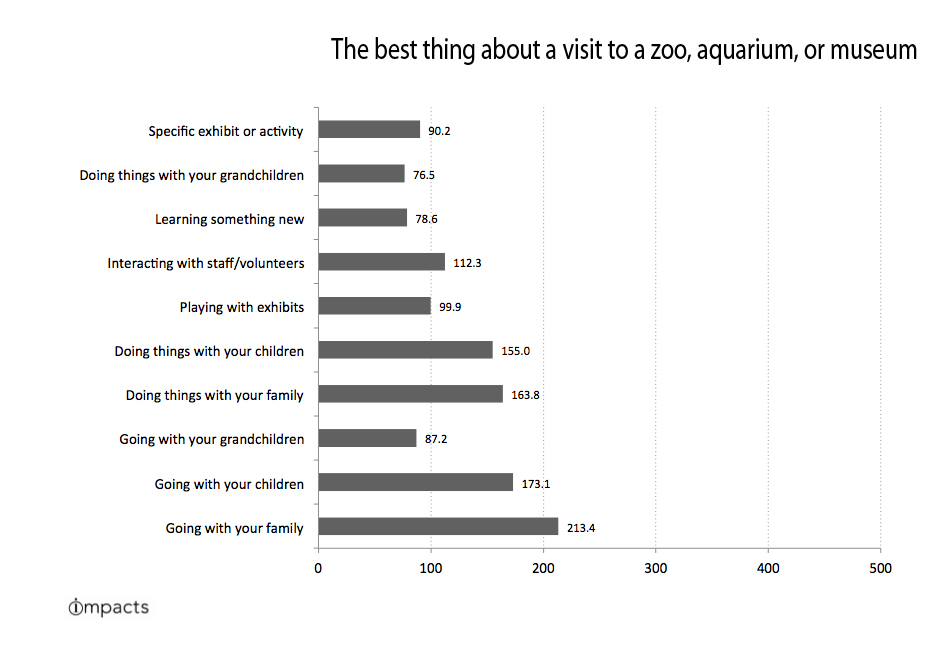
When it comes to “the best thing about visiting a zoo, aquarium or museum,” visitors indicate that having a shared experience with friends and family is most important.
I’m pleased to have the opportunity to share a tidbit of data uncovered by IMPACTS Research & Development. The data below was first published by the National Awareness, Attitudes and Usage Study (NAAU) and, since April 2011, it has been re-confirmed in six, separate, proprietary studies on behalf of various visitor-serving organizations with which we work. The image below shows unprompted responses to the question and are displayed with the index value for each response. The bottom line? People don’t go to a museum to see the newest exhibit… people go to a museum to see the newest exhibit with people they care about.
Of course, museum marketers are selling an experience, but the trick may be for museum marketers to understand that they are selling a personal experience.
The “with > what” mentality may turn the museum industry’s self-perception on its head. Traditionally, museums (especially certain kinds, such as art and history museums, for example) may be perceived as quiet places preserved in the past and shielded by silence and white walls. Museums have been seen as intellectual spaces with curators serving as great academic gatekeepers. The ‘museum experience,’ to those of us involved in creating and shaping it, often revolves around the exhibits, the artifacts, the collection…and it is about those things. For visitors, however, the experience is more than an intellectual quest; it revolves around the entirety of the experience and the company attending with the visitor.
This does not mean that the “what” isn’t important. In the information age, everyone is a curator. Although accessibility and self-curation are becoming increasingly important, having and promoting these artifacts and collections can certainly inspire visitation. They are the things (“whats”) that people come with their loved ones to see. In other words, the “with” here may not be as strong without the existence of the museum’s “what.” (…Did you follow me there?)
Take a look at a visitor serving organization that has shared the love… To be a museum marketer and miss this critical half of the equation for visitor motivation is a major loss. In fact, institutions that miss this will be limited, especially as the information age continues to reveal increased communication based on public sharing and online brand identity. So who is already onto this information? To name an example that I’ve referenced before, Monterey Bay Aquarium used the “with” to promote their “what” in their extremely successful Share the Love campaign. The aquarium got creative and pulled out all the stops with this campaign, and their concept of “sharing the love” – or sharing the experience of visiting the aquarium – was a hit.
Moreover, there’s empirical evidence that members of Generation Y may be particularly receptive to marketing messages that promote sharing visitor experiences. In particular, Millennials seek existential experiences. Sometimes this young demographic gets a bad rep for moving conversation online (“Get off of Facebook and go hang out outside”), but this demographic is actually upping the demand when it comes to in-person experiences as well.


